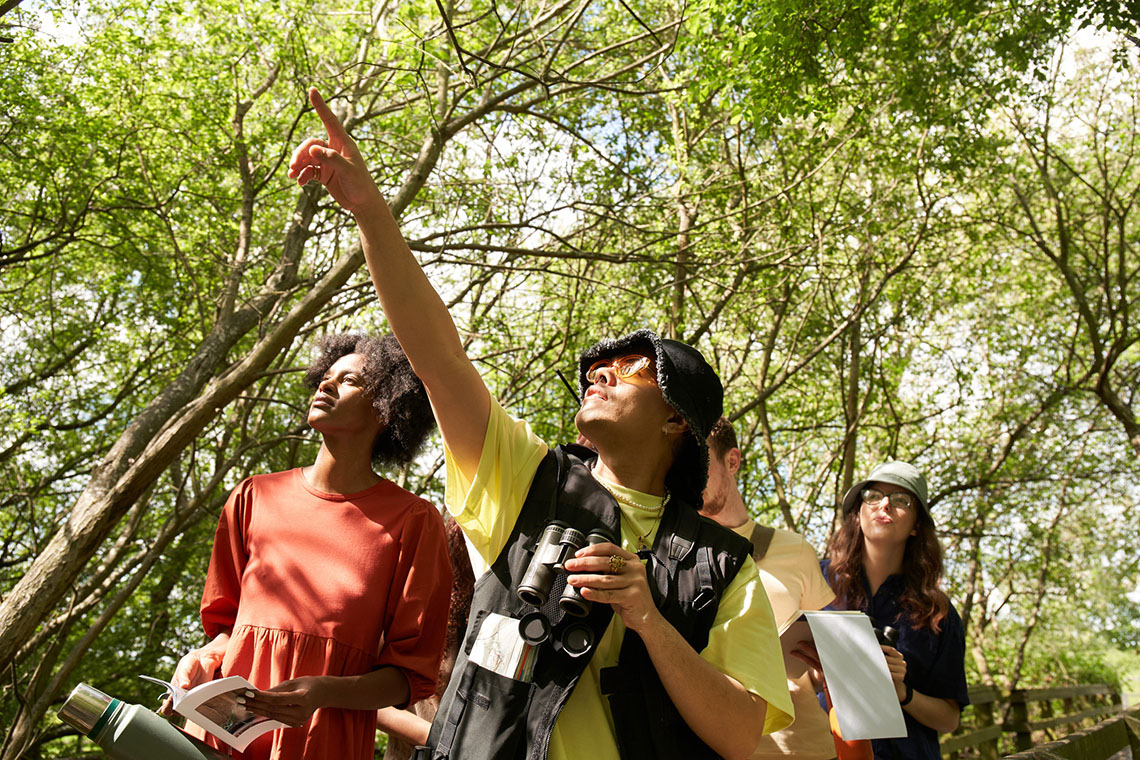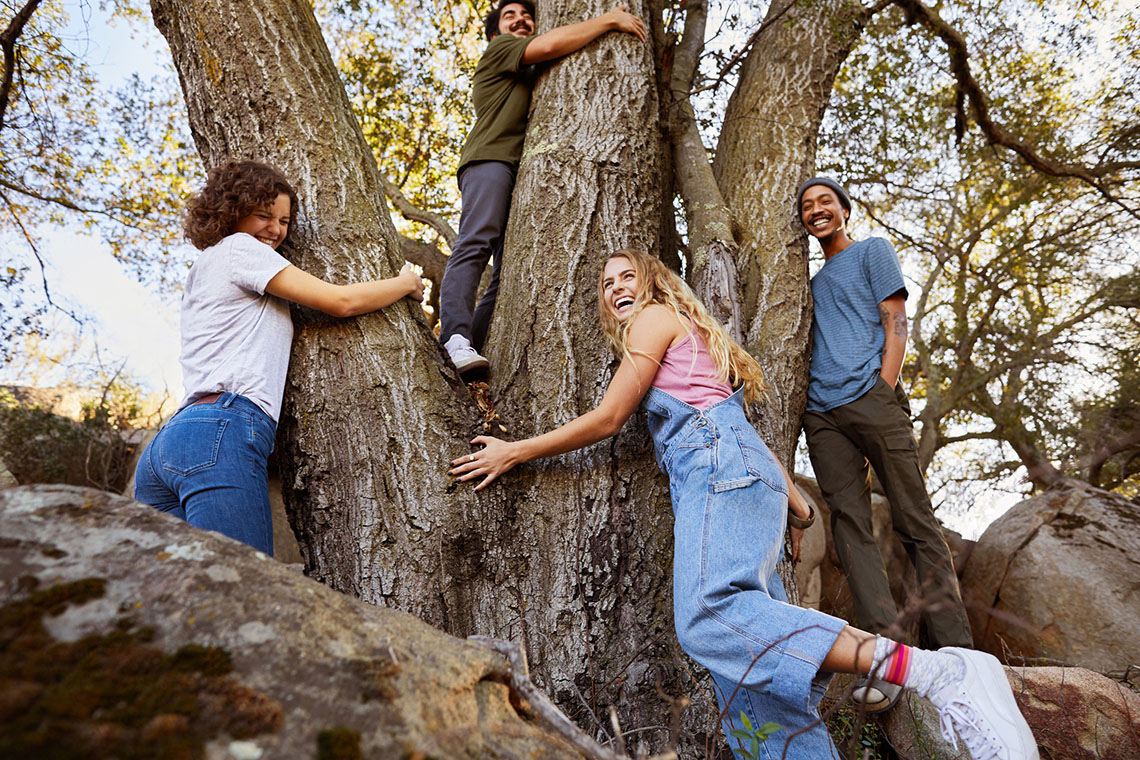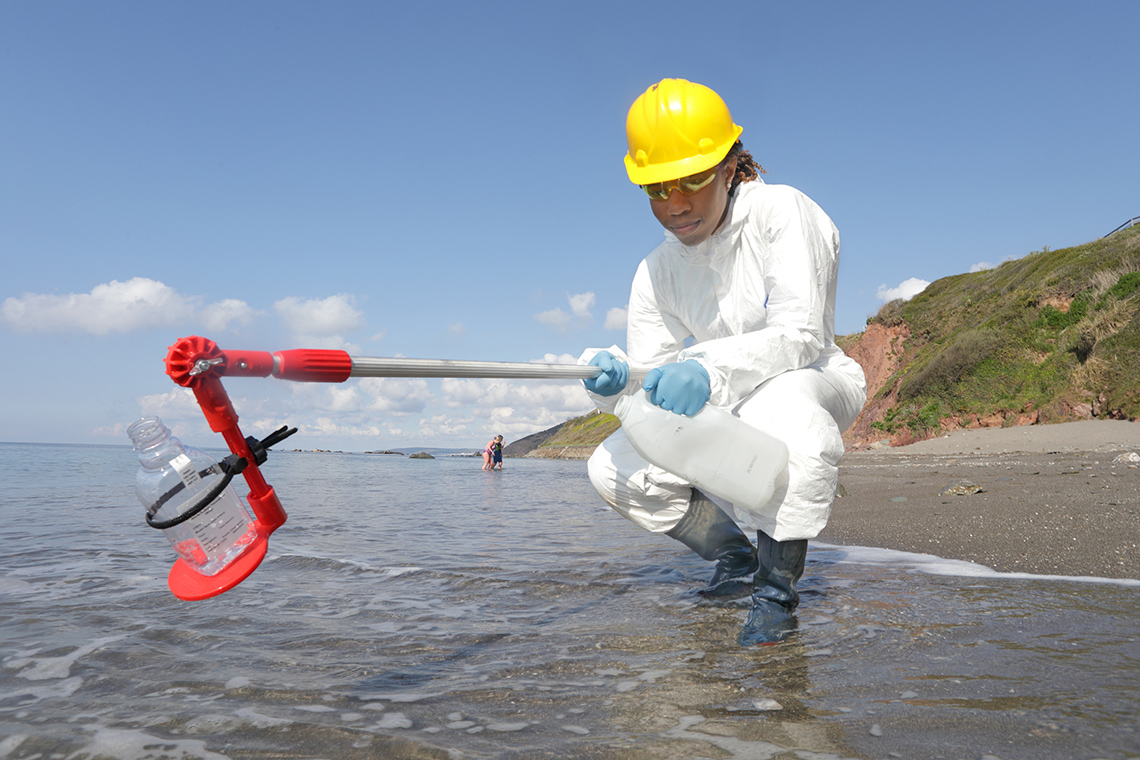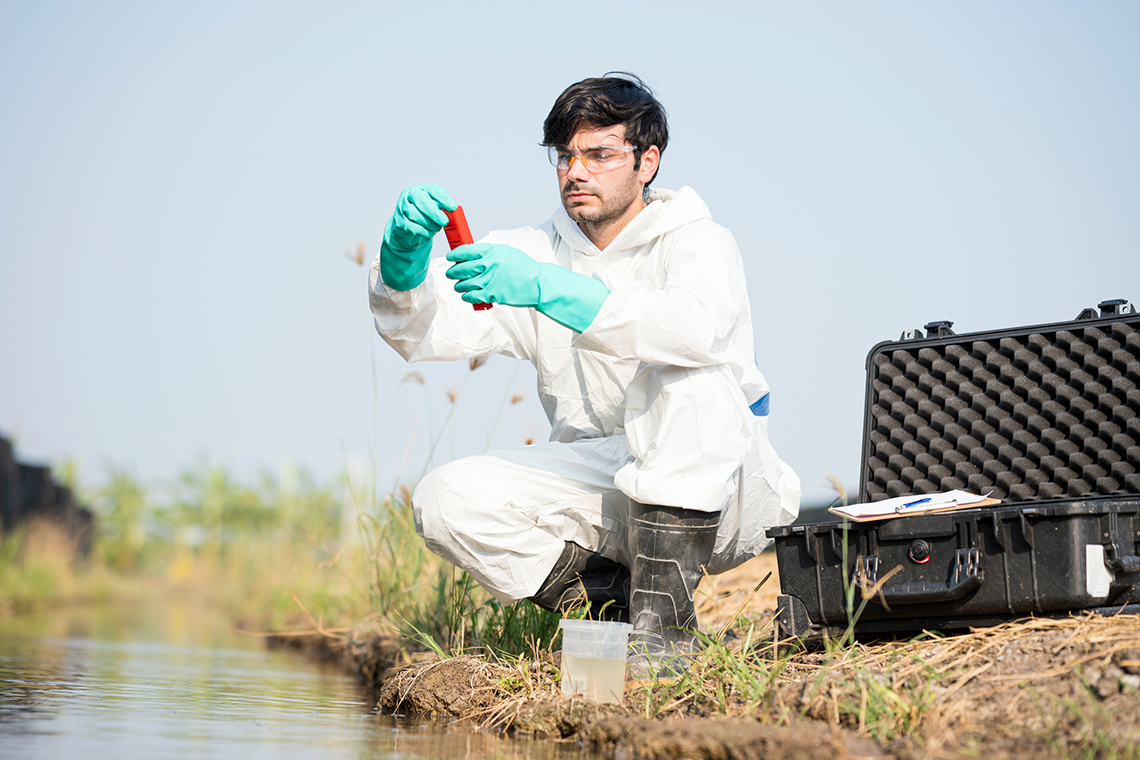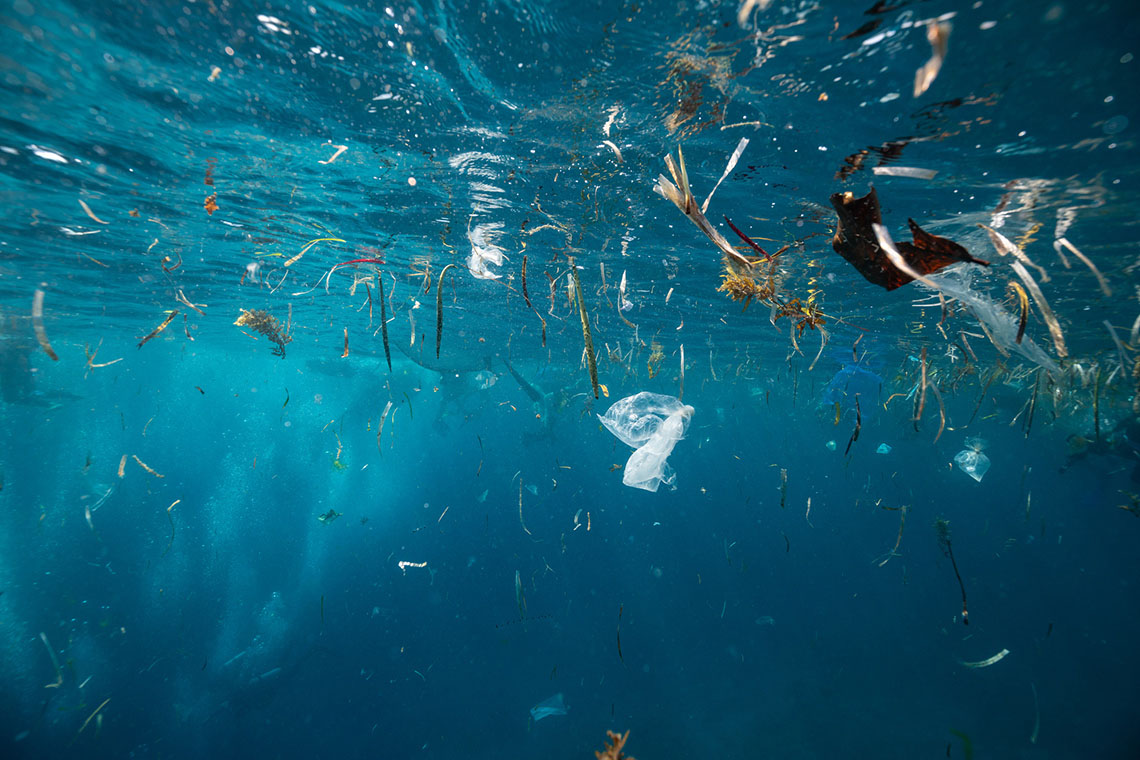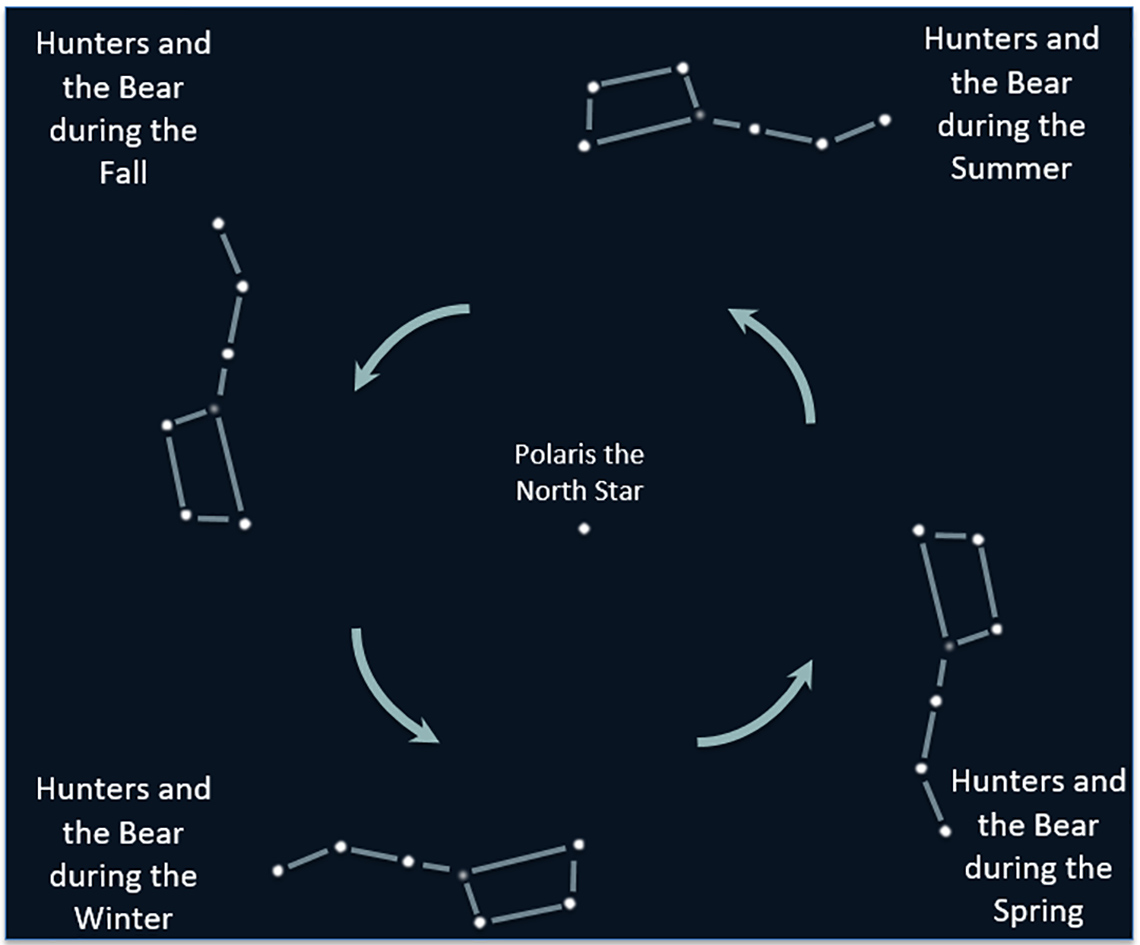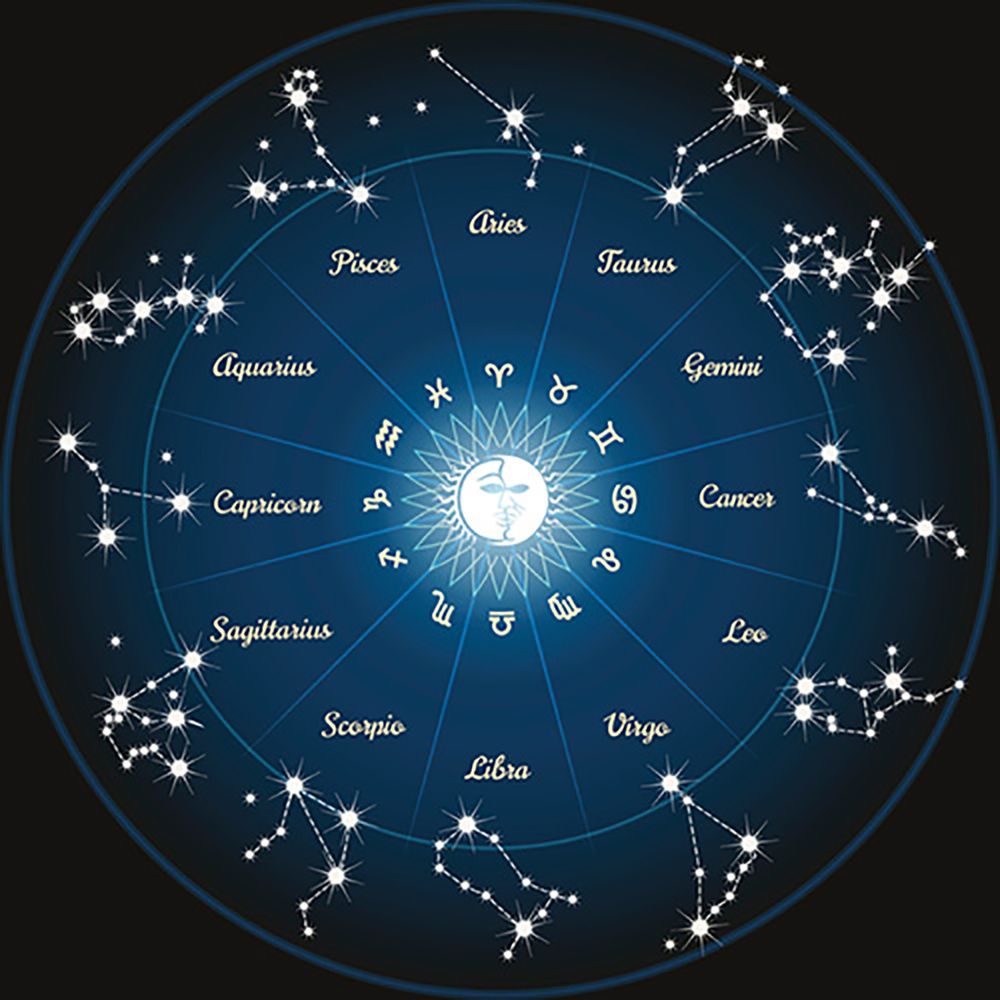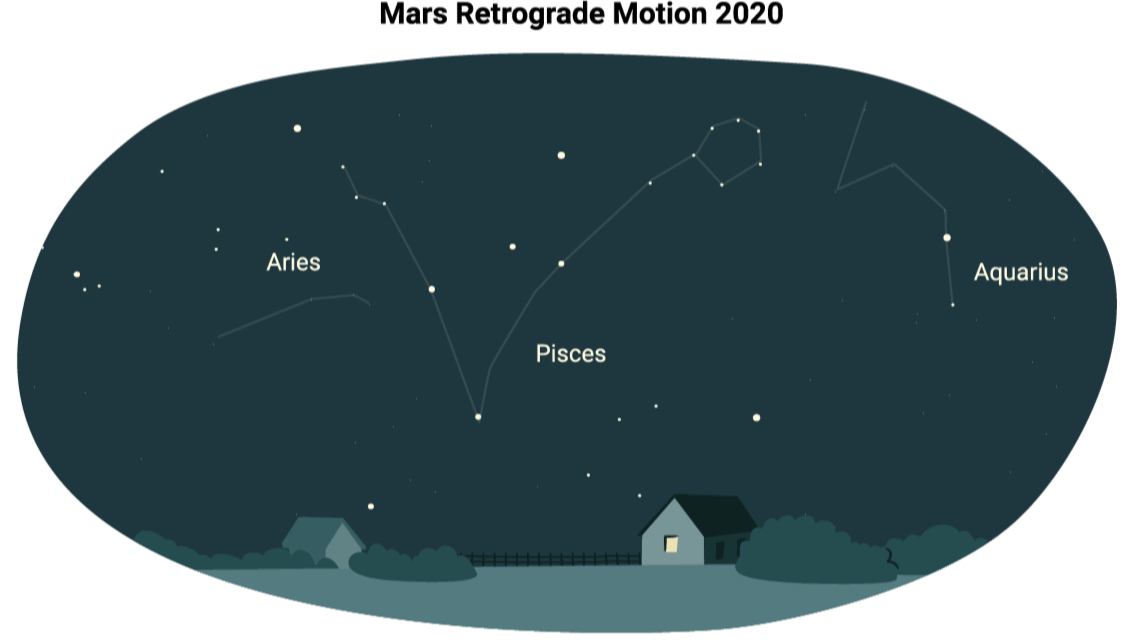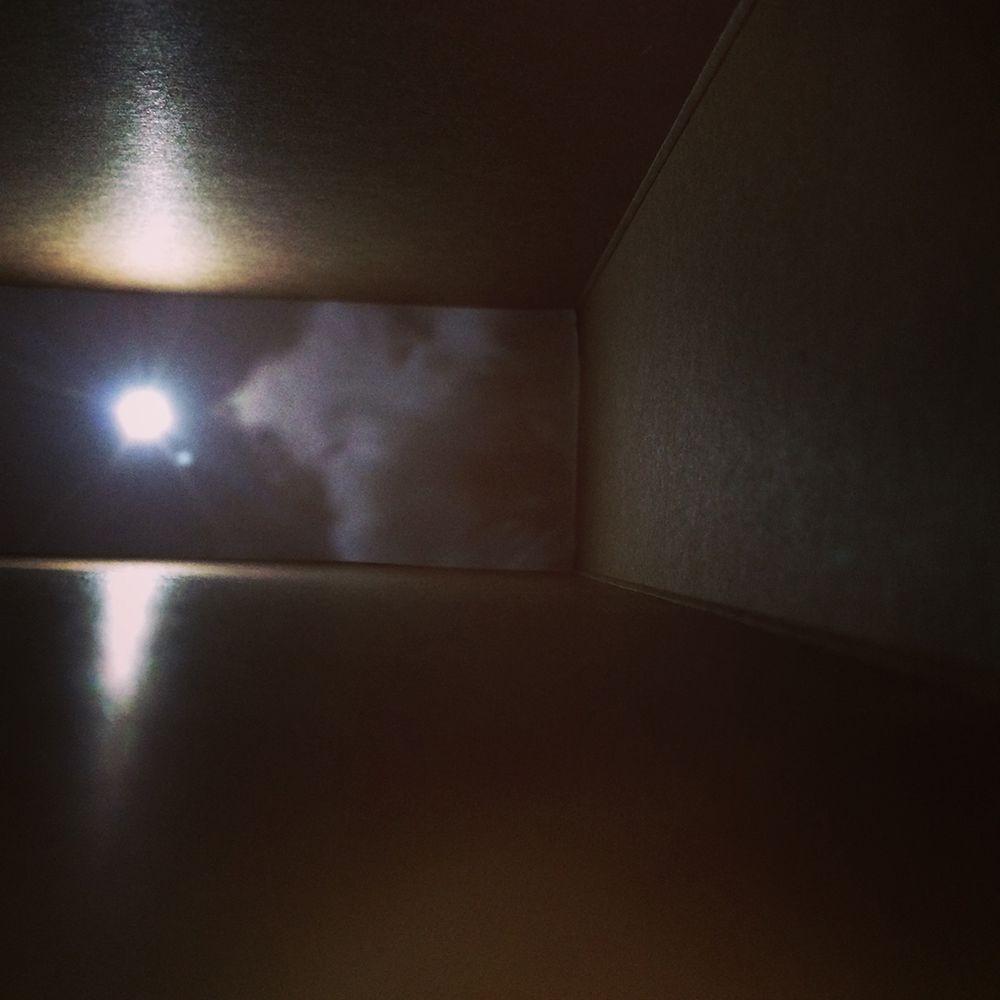Introduction
Welcome to Science class! We hope that you will stay curious and bring a variety of perspectives to your learning. This course is about science and so much more!
In this course, you will notice there are different science strands incorporated into each learning activity. For example, in the first half of a learning activity, you may explore topics related to Biology and later begin learning about Earth and Space Science.
Why this approach? Great question! When learning and practising science, consider how learning about sustainable ecosystems and climate change (Biology), matter and natural elements (Chemistry), principles and applications of electricity (Physics), and space exploration (Earth and Space Science) all impact social, environmental, and economic factors of our world.
In summary, all four strands of science are related to our changing world. This course will introduce you to a new way of thinking about science and how its applications can address real-world issues.
Learning journal
As you progress through the course, you will use a tool to help you record your thinking during your learning. Whenever you encounter the learning journal icon, it will prompt you to record your thinking and any important information. How you use your journal is ultimately up to you.
Your learning journal entries can be presented in a variety of ways and do not all need to be in the same format.
Press the Format Suggestions button to know more.
- handwritten journal
- online journal
- video recordings
- pictures
- audio recordings
Your learning journal will be an important way to organize your learning. The content should be organized in a way that makes the most sense to you and will likely vary depending on the topic. This is a personal decision based on how you learn best, but it is important that you have a consistent place for your notes.
Press the Content Suggestions button to know more.
- tables
- T-charts to compare or contrast
- mind maps
- flow charts
Record your answers in a way that will make sharing later easy. Feel free to include images directly in your journal. Links to resources or videos are also acceptable.
It will also help you with the culminating tasks for the course as well as the learning tasks in each unit.
What you should include in your journal
Each journal entry should include the following:
Part 1: Unit and learning activity number
Part 2: Identification of the prompt you are choosing to answer
Part 3: The required content, written by you with evidence of your learning
How you present the three parts is up to you!
Before you get started, let me introduce you to your first learning guide, Kyra. Kyra is an environmental technician.
Career connection: Environmental technician

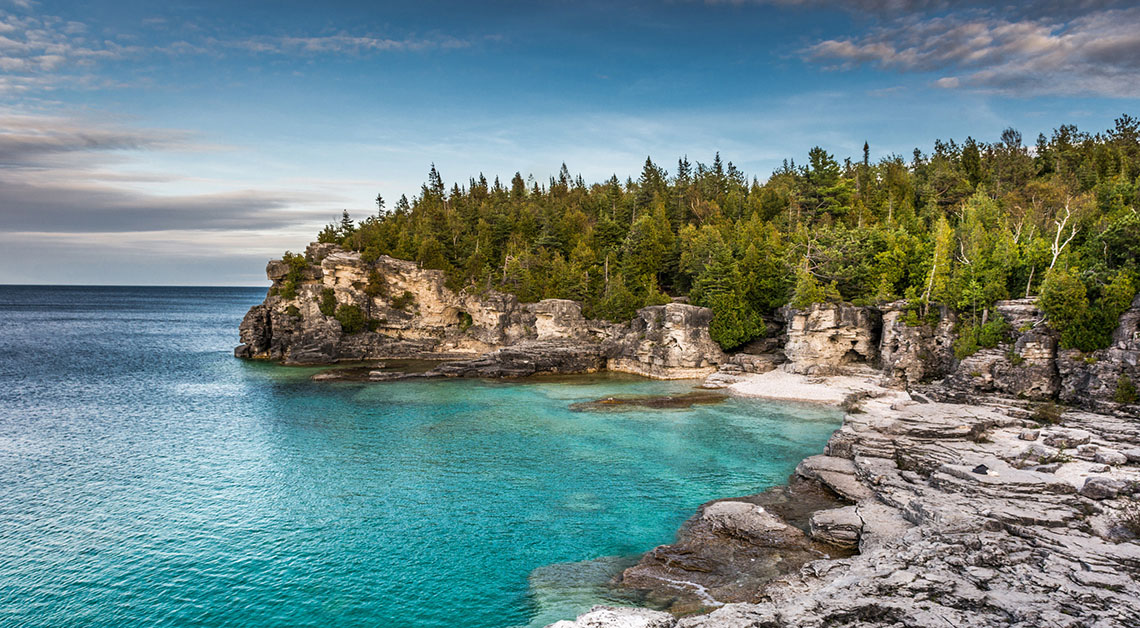
Shores of Georgian Bay, Ontario
Hi! I’m Kyra (she/her). I’m glad you could join me here on the shores of Georgian Bay. There’s a lot we can learn by observing the surroundings. Some natural elements are easy to notice, such as the wind, the number of flies buzzing around our heads, or the feeling of the Sun on our faces. Other things around us are harder to detect but technology allows us to learn more about how various factors in the environment affect much larger aspects of our lives. For example, how much oxygen is dissolved in water, the number of different gases in the air and their concentrations, or the type of bacteria living on the bottom of the lake are important to know as an environmental technician.
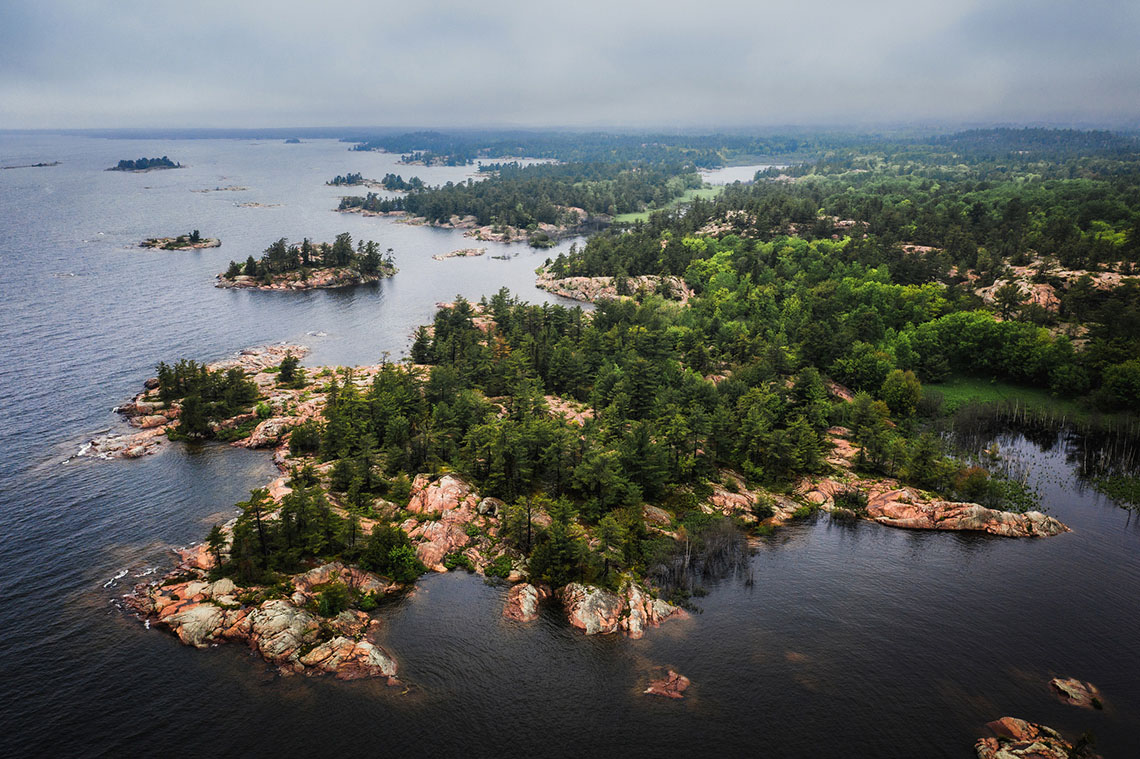
Islands of Georgian Bay of Lake Huron at Killarney Provincial Park
Georgian Bay, located in south-central Ontario and part of Lake Huron's coast, is a very important place to many people. It’s an old and sacred body of water also known as Mnidoo-gamii in Anishinaabemowin. Note: There are different variations of spelling Mnidoo-gamii, another possibility is Mnindoo-gamii. Mnindoo-Gamii (Press the icon to access pronunciation) translates to "The Great Lake of the Spirit." This place of beauty provides many with bounty, rest, and safety.
Many Indigenous communities have a connection with the land, water, and sky. It’s a place to feel at ease and comfort.
Learning journal
In your first learning journal entry, use the following prompts to record the role or job description of the career to which you were introduced.
Career connection
- Record the career title of the learning guide.
- Write a short description of their roles and responsibilities.
Notebook
Think of a natural place that’s special to you. Imagine a time where you felt connected to a natural environment–big or small, near or far. Where are you?
Consider the following questions when reflecting on your response:
- Does your special place have a name and location?
- What does it appear as? Does it have any distinctive sounds or smells? How does it make you feel to be in your special place?
- What does this place mean to you? How do you connect with this place?
- What meaning does this place have for your identity?

Learning Skills and Work Habits reflection
Success in this course can take many shapes and forms. One way of tracking your progress is to reflect on how you are using the 6 Learning Skills and Work Habits (Opens in new window). Explore the following tabs to learn more about each and how they apply to your success in this course.
The student completes and submits assignments based on timelines they set for themselves.
The student develops a plan that will help them complete learning activities and assignments.
The student seeks out information, technology, and resources, which will support their learning.
The student independently monitors and self-assesses their progress in the course by reviewing their personal goals for the course.
The student responds and positively self-reflects on the ideas, opinions, values, and traditions of others.
The student approaches problems with an open mind and demonstrates a willingness to take their learning to the next level.
The student sets their own success goals for the course and monitors their progress.
The student can identify areas of improvement and determine next steps.
Take a moment and reflect on how you can successfully apply any of the 6 Learning Skills and Work Habits in this learning activity.
Transferable skills
One of the skills you are practising in this learning activity is Global Citizenship and Sustainability. You will be investigating the political, environmental, economic, and social forces at play in the world today, how they interconnect, and how they affect individuals, communities, and countries.
Environmental technicians and the real world
There are many misconceptions about the roles and responsibilities of an environmental technician. The following images are just some of the many ideas that people have about a person in this career. Explore the carousel to consider some of the ideas of what an environmental technician does.
Discover more
Before exploring the next part of this learning activity, take a moment to generate ideas of what an environmental technician does. Use your preferred search engine and enter the terms "environmental technician job description." Examine the results to further your understanding of the career.
These search terms are provided as suggestions only. You are encouraged to search for additional resources to support your understanding.
A lot of different ideas can come to mind when you think about someone who works in an environmental field. An environmental technician helps to monitor the health and sustainability of ecosystems.
Explore the following carousel, which accurately depicts some of the responsibilities of an environmental technician.
The sky
In addition to the skills and training needed to become an environmental technician, exploring stories passed down from Indigenous Elders can support and enhance scientific knowledge—also known as “Two-Eyed Seeing” or Etuaptmumk. Learning about the health of the Earth from a variety of perspectives only strengthens your knowledge of science. Among First Nations, Métis, and Inuit communities, there are similar stories about how the pattern in the sky reflects patterns on land.
“We often explain Etuaptmumk - Two-Eyed Seeing by saying it refers to learning to see from one eye with the strengths of Indigenous knowledges and ways of knowing, and from the other eye with the strengths of Western knowledges and ways of knowing ... and learning to use both these eyes together, for the benefit of all... The guiding principle of Two-Eyed Seeing further helps us to acknowledge the distinct and whole nature of Indigenous knowledge and ways of knowing (i.e., such are represented as a whole eye). Similarly, it helps us recognize the distinct nature of Western knowledge and ways of knowing (i.e., such are also represented as a whole eye). At the same time, Two-Eyed Seeing asks that these two eyes work together (i.e., as they do in binocular vision).”
Source: Institute for Integrative Science & Health. (n.d.). Two-eyed seeing. SaskToday. http://www.integrativescience.ca/Principles/TwoEyedSeeing/
Discover more
An excellent star story you can explore online is one of Wilfred Buck telling the Inenew (Cree) story of Mista Muskwa (The Big Bear) and Tehpakoop Pinesisuk (The Seven Birds). Mista Muskwa is represented by the “Big Dipper” and Tehpakoop Pinesisuk is represented by “Corona Borealis.” Using an online search engine of your choice, use the search words "Wilfred Buck tells the story of Mista Muskwa" to get you started.
Sometimes objects in the sky make a spectacular display. Observing a meteor can be very special!
Explore this!
Check out the following video from NASA to learn more about the meteor showers that occur every August in North America.
Courtesy Nasa/JPL-Caltech

Kyra: The Sun sometimes doesn’t feel as special as a meteor. But the Sun is special to all of us living on Earth. Observations of the sky are important. They tell us about the land around us. They also tell us about where the Earth is in space.
Where is the Sun?
In Ontario, over the course of a year, the Sun changes its height overhead as it passes through the sky. The Sun is at the highest point in the sky in the summer and the lowest point in the winter. The following animation depicts the position of the Sun in the sky at midday throughout the year.
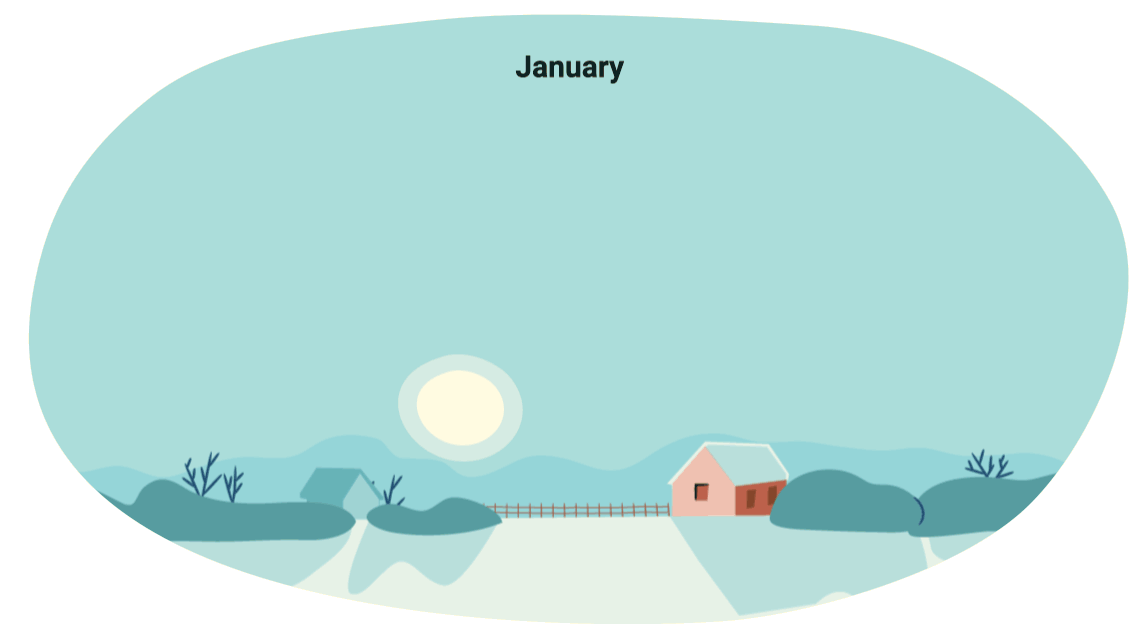
It travels a longer path overhead in the summer leading to earlier sunrises and late sunsets. In the winter, the Sun doesn’t rise as high, so it takes a shorter path from the eastern horizon to the lower horizon.
One question people ask when observing the sky is if the objects in the sky are moving or if we on Earth are moving? Imagine you’re riding a train that’s stopped at a station. You observe your surroundings out of the train window. Another train is stopped, too. Then you observe motion. Is your train moving, or is it the other train?
Explore this!
Explore the following video created by Jason Shron of Rapido trains to experience model trains moving relative to each other.
Observations of the sky
Learning journal
How can we use observations from the sky to answer if the sky is moving or if the Earth is moving? Both Indigenous ways of knowing, and modern scientific thinking use patterns to make sense of things.
Is the sky moving or is the Earth moving?
Use the information in the following section to complete the activity.
Access the following fillable and printable document Observations of the Sky to complete the activity.
Movement of the Sun
Solstice & equinox
Many First Nations stories involve the ideas of circles and cycles: the seasons, the day, moon cycles, baskets, hoops, life stages, animal migration, plant and animal reproduction. The cycle of life is never ending! The Sun moves from its lowest point at the winter solstice to its highest point at the summer solstice and then back again. Or is it our planet that’s moving? It’s hard to tell!
For people living in the high arctic, the time around the winter solstice is 24-hour darkness. You can imagine the feelings people get when the Sun rises again closer to spring!
Once again, explore the following animation that depicts the change in height of the Sun in the sky over the course of a year.

Agriculture
To grow a plant outdoors, it is important for the conditions to be just right. For this reason, the invention of the calendar shortly followed the invention of agriculture. For those who forage, hunt, or gather, it’s also important to know the best time to tap a maple tree, when to fish, or the best time to collect berries or mushrooms.
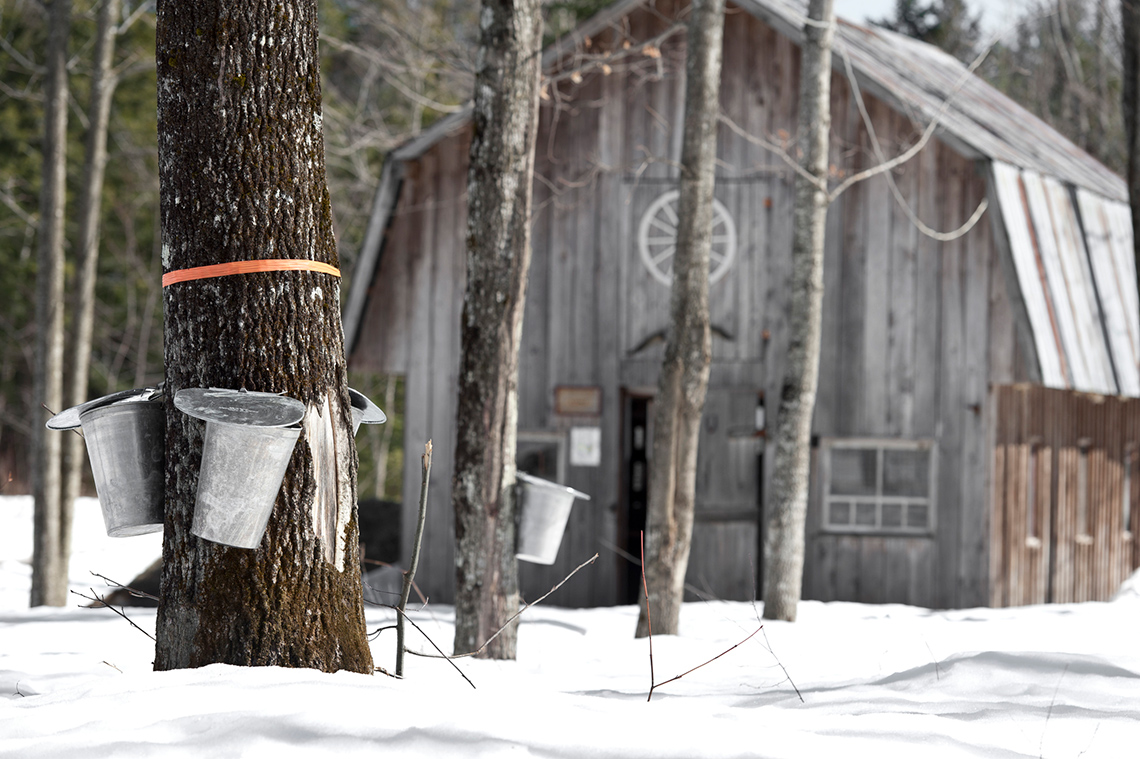
Eclipses
During an eclipse, we can clearly observe the Moon block the Sun. From this observation, we can tell that objects in the sky move differently. We can also predict that the Moon must be closer than the Sun.
Explore this!
Check out the following video to learn more about solar eclipses.
Movement of the Moon
Calendars
Most cultures started using the moon cycles to mark a month. Doing some simple calculations, if each moon cycle is about 28 days, then a year in this 13-cycle calendar works out to 364 days, not 365 days! Over several decades, that one day difference can add up to be a whole month off the seasons. This was different for other cultures that used a twelve-moon calendar. That’s why the Gregorian calendar, which is widely used around the world today, uses 12 longer months (30 or 31 days) plus one shorter month (February). You may also know that February 29th comes once every 4 years because a year is about 365 ¼ days long so the calendar needs to catch up!
The following image from the Oneida nation depicts the 13 moons of Turtle Island. There are 13 segments on the turtle’s back that are named according to the activities that occur during each moon cycle. The edge of the shell has 28 platelets, one for each day in the cycle.
Explore the following interactive entitled Oneida Moon Calendar to learn more about how the cycles of the moon relate to the activities of the community month to month, over the course of the year.
Religion
The importance of the moon cycle can be found in many cultures and religions. They help individuals keep track of important events and mark celebrations. The following image depicts the phases of the moon in the night sky.
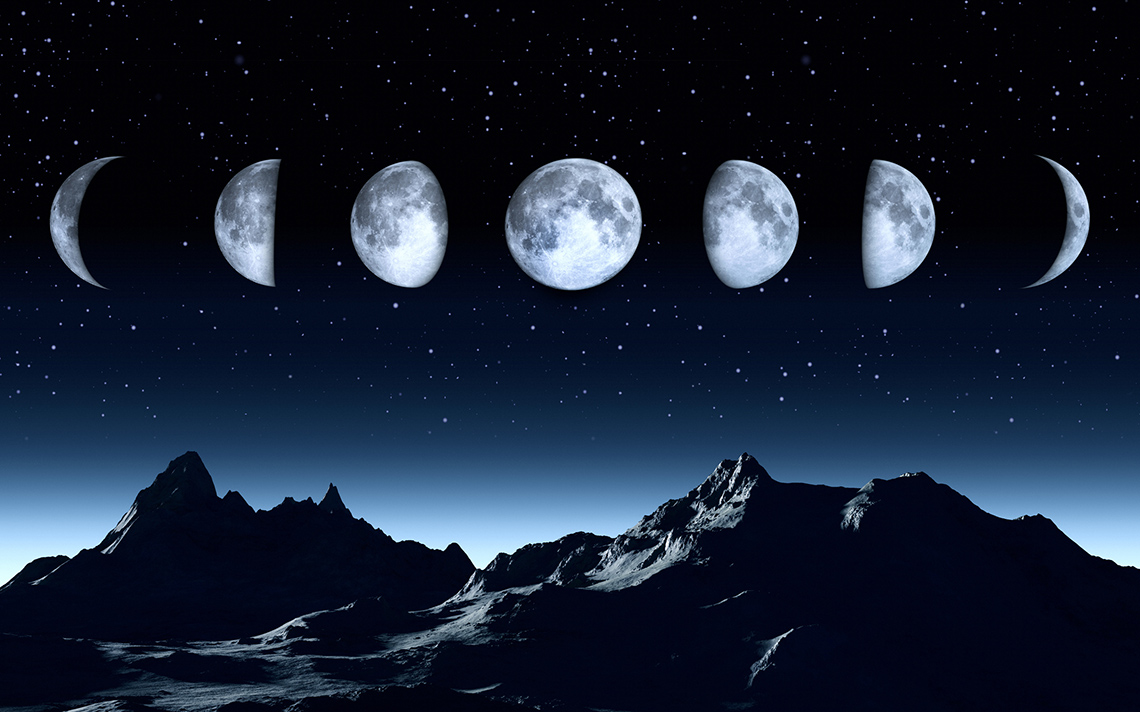
Phases of the Moon
Studying the phases of the Moon we can clearly observe that the Moon must move around the Earth as depicted in the following animation.
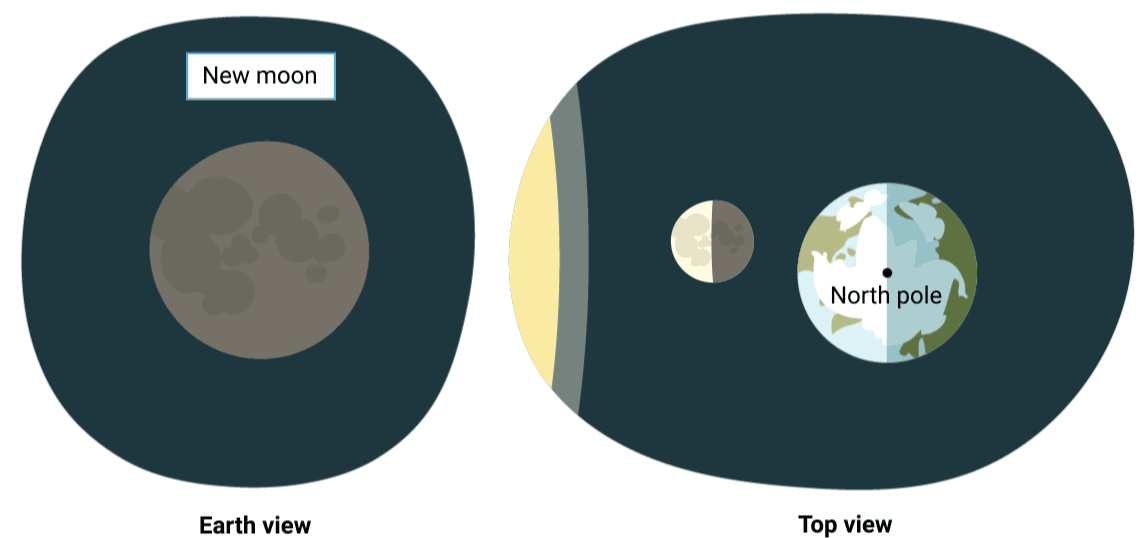
Arrangement of the stars
Press the following tabs to explore how the arrangement of the stars in the night sky relates to storytelling, the zodiac, and navigation.
Movement of the planets
Press the following tabs to explore the movement of planets with respect to each other and other objects in the sky.
Comets, meteors, auroras
Comets
Cultures around the world noticed comets as they appeared in the sky. Even civilizations with sophisticated observatories like the Greeks, Chinese, and Mayan, were not able to predict when comets would appear. For this reason, many cultures consider them as signs of the arrival of an important event. Today we know that comets move around the Sun on larger orbits than the planets. Larger orbits mean that comets could take centuries or longer to reappear making it hard to make observations over time.
Explore this!
Check out the following video of the comet ISON.
Meteors
Every mid-summer in Ontario people can observe the Perseid meteor shower at night. When some meteor showers occur at the same time each year, it gives us a hint that the meteors must come from a particular place along Earth’s orbit around the Sun. The leftover dust and rocks from a passing comet leave a trail. As Earth passes through this trail, the dust and rocks pass through the atmosphere and heat up to the point that they give off light energy. Is this another example of evidence that the Earth is moving?
Explore this!
Access the following video to learn more about the dust ring around Venus.
Credit: NASA’s Scientific Visualization Studio/Tom Bridgman
Auroras and the afterlife: Inuit perspectives
Earth passes through solar radiation that is unevenly emitted. To Inuit communities, the bright colouration we call aurora is believed to be a sign of spirits from the afterlife revealing themselves. Many Northern cultures associate aurora with death or spirits. Based on scientific evidence, the aurora is made when the atmosphere interacts with radiation from the Sun. The aurora appearing different over time is evidence that the Sun’s energy is not evenly emitted in all directions.
Explore this!
Explore the following video from the Canadian Space Agency to learn more about auroras, which are also known as the Northern Lights.
Challenge
To learn more, try to complete the following activity to safely observe the Sun.
The light from the Sun is too strong to observe directly. Astronomers use filters on solar telescopes to observe the Sun. Another strategy is to make an image of the Sun using a camera or a lens. The first camera created was a pinhole camera. You can make a pinhole camera out of common materials found around the home. The idea is to reuse things that would otherwise go to recycling or the landfill.
Check out the following video to learn more about creating your own pinhole camera. The video details the steps for building a pinhole camera, but how does the image get projected onto the inner surface of the box?
Explore the following tabs to learn more about the solar eclipse projector and pinhole camera.
Learning journal
If you chose to dig a bit deeper to learn more, add images from your pinhole camera to your learning journal and answer the following questions:
- What did you discover?
- Do you get a better image on a clear day or when the Sun is hiding a bit behind a cloud?
- Is it clearer when the Sun is high overhead or when the Sun is closer to the horizon?
- Does it work to observe the Moon?
Take a break!
Excellent work! You have just completed the section on observing the sky from Earth. Now is a great time to take a break before you move on to the next section on sustainability and the sustainable development goals by the United Nations.
Sustainability

Science group: Why did you become an environmental technologist?
Kyra: That’s a good question.
I wanted to make a difference.
We know there are many challenges out there and people are needed to study the environment. For me, I feel strongly about this place where I am. I want to make sure it’s going to be there to sustain future generations.
I know that sounds like a big responsibility! How can one person make a difference when a place is as large as this?
There are many tools out there to help us solve problems. When we think of a problem that needs to be solved, we can use an engineering design approach. Let’s explore this approach in the following video of chimpanzees trying to get bananas that are out of their reach. How do the chimpanzees solve this problem?
Explore this!
Check out the following video of footage from the Kohler Study depicting chimpanzees working together to solve a problem.
The preceding video displayed a process of problem solving. Problem solving is not linear but requires many steps that may need to be repeated. Press the Problem Solving Process button to explore the steps in this logical process.
Even if we can’t tell what’s going on inside the chimpanzee’s head, do you notice evidence of the engineering design approach in the video?
Now that we have a method of solving problems, how might we think about solutions when applying our skills to thinking about real-world issues?
Sustainable Development Goals in action
The United Nations Sustainable Development Goals consist of a list of 17 actions to achieve a better and more sustainable future for all.
Explore this!
Explore the following video to learn more about the Sustainable Development Goals.
When we think about a place that is important to us, such as Earth, we want to make sure it’s protected for future generations. There are two United Nations Sustainable Development Goals that could help us preserve and protect a place that is important to us. The first one to consider is Goal 3: Good health and well-being and the second one is Goal 12: Responsible production and consumption.
Good health and well-being work towards overall common good for individuals. The bounty of the land helps to sustain people and the community. When we eat the food nature provides us, we eat the same nutritious food that has sustained us for generations. That’s why it’s important for an environmental technician to collect and test samples from the air, land, and water.
Explore the following interactive entitled Goal 3: Good Health and Well-Being to learn more about why addressing this goal is important to sustainable development.
Consumption and production also go hand in hand. Every culture on Earth has a tradition of using the resources available to make things that improve the quality of our lives. A couple of questions to consider are the following:
Do we need to keep manufacturing even more products, devices, and material objects, or can we be satisfied with what we currently have? Are companies producing material objects in sustainable ways—or ways that help prevent further harm to the environment?
That’s why it’s important for an environmental technician to inform polluters about more environmentally-friendly ways to operate when producing material goods.
Explore the following interactive entitled Goal 12: Responsible Consumption and Production to learn more about why addressing this goal is important to sustainable development.
Now it’s your turn. Explore each of the following Sustainable Development Goals and possible solutions. There are many solutions possible when thinking about real-world issues!
Check out the following interactive entitled United Nations Sustainable Development Goals to learn more about each of the 17 goals.
Learning journal
Think like an engineer! What are some problems the Sustainable Development Goals are working to fix? Summarize at least three problems and a possible solution in your learning journal.
Access the following fillable and printable document Sustainable Development Goals: Problems and Solutions to complete the activity.
What does it all mean?
We are all connected to where we live in some way. We can use observations from the sky to tell us about the place we live in. In so many ways, we are connected to the land, water, and air. To preserve the spaces around us, it’s important to think about sustainability and the Earth.
Learning journal
There are many different Sustainable Development Goals. Which of the Sustainable Development Goals is most important to you and why? Record you thinking in your learning journal.
Preserving what’s special
Now it’s time revisit the notebook prompt at the start of this learning activity where you had a chance to share your special place. Here you will focus on suggesting how sustainable choices can help to preserve your special places.
Self-check
Your task is to revisit your chosen special place. What problem might harm this special place? Then, suggest an action or solution related to a Sustainable Development Goal and how it could help to protect this place. How could this solution make sure that the special place will be there for future generations?
Refer to the information in the learning activity as well as your learning journal for ideas.
As you craft your response, be sure to use the following checklist to keep your work focused.
Self-assessment checklist
Learning journal
Vocabulary: Use your learning or other sources to record and describe each of the following terms in a way that makes sense to you. As you complete the learning activity, fill in the definition and key terminology pertaining to the vocabulary.
- ecosystem
- solstice
- eclipse
- phases of the moon
- constellation
- zodiac
- Polaris
- retrograde motion
- heliocentric
- geocentric
- comet
- meteor
- aurora
- Sustainable Development Goals (SDGs)

Aurora Borealis in the sky near Thunder Bay, Ontario
Learning journal
Record your reflection in your learning journal. Consider the following questions:
- What SDGs were described in this learning activity? Why are they important when considering real-world issues?
- What’s another question you could ask an environmental technician?
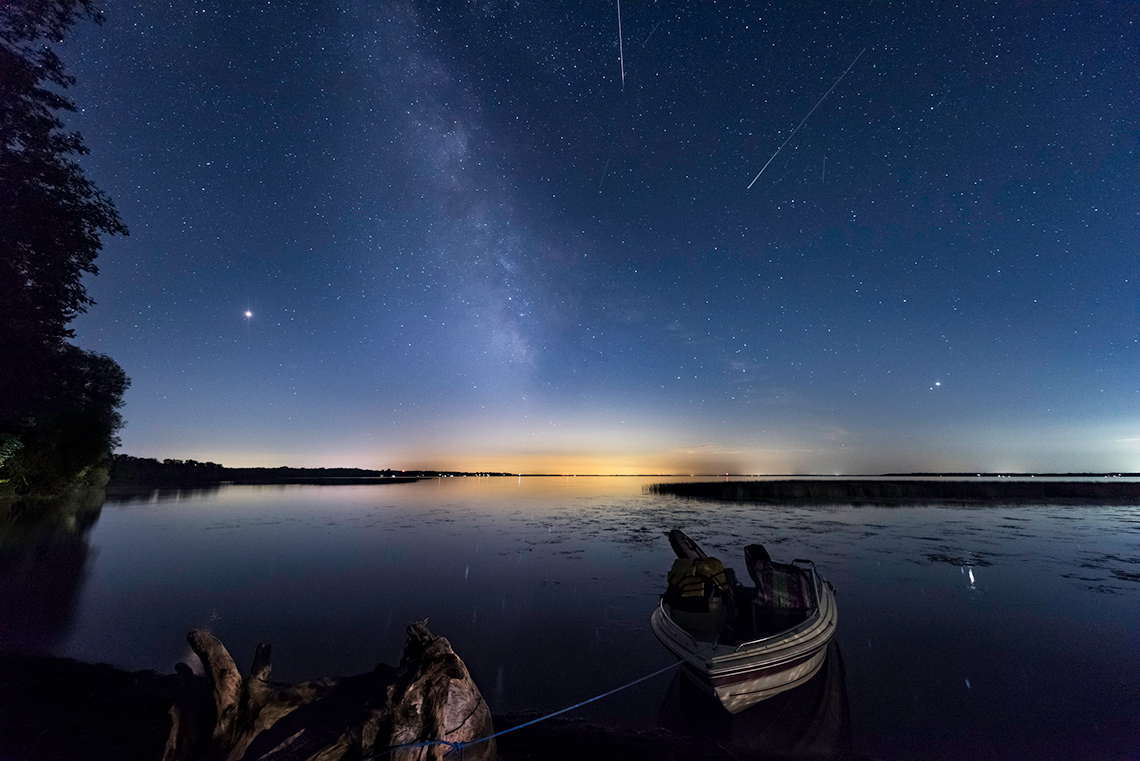
Meteors and the Milky Way observed in the sky at Lake Simcoe, Ontario.
Thought book
Culminating Assignment
At the end of this course, you will complete and submit a Culminating Assignment that covers tasks from various units.
Keep the Culminating Assignment in mind as you progress through the course.
Take a moment to review the Culminating Assignment description, and while you do not have to complete any of the tasks now, you should begin to think about them.
When you are ready, access the following page to learn more about the Culminating Assignment.
Self-check quiz
Check your understanding!
Complete the following self-check quiz to determine where you are in your learning and what areas you need to focus on.
This quiz is for feedback only, not part of your grade. You have unlimited attempts on this quiz. Take your time, do your best work, and reflect on any feedback provided.
Press Quiz to access this tool.
Based on your answers, reach out to your academic officer for additional support as needed.
Learning skills reflection
Learning journal
It is important to reflect on your learning at the end of each learning activity. It will help you understand where you are in your learning and what areas you may need to review further. Take a moment and reflect on how you have used any of the 6 Learning Skills and Work Habits in this learning activity.
You may wish to begin thinking about how you can develop and implement these Learning Skills and Work Habits in the next learning activity.
Take a break!
Excellent work! You have just completed this learning activity. Now is a great time to take a break before you move on to the next learning activity.
Connecting to transferable skills
Recently, Ontario worked with other provinces in Canada to outline a set of competencies that are requirements to thrive. Ontario then developed its transferable skills framework as a set of skills for students to develop over time. These competencies are ones that are important to have in order to be successful in today’s world.
Read through the framework and the student look-fors (Opens in new window). Copy this document into your notes - you'll refer to it in each unit.


